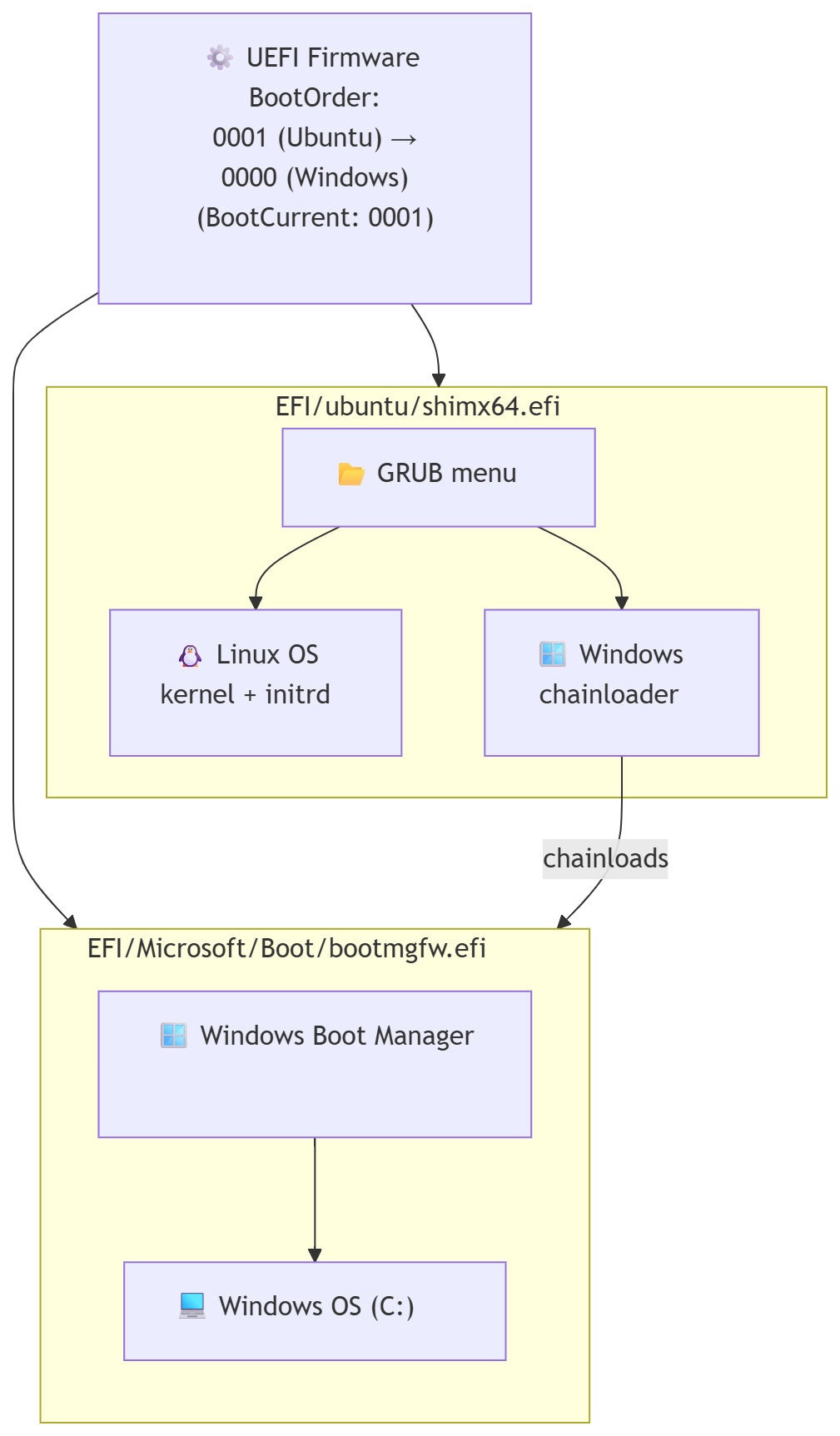👾 GRUB Invaders: Because Bootloaders Deserve to Have Fun Too
You know how you can make your bootloader sing a little tune?
Well… what if instead of music, you could make it play Space Invaders?
Yes, that’s a real thing.
It’s called GRUB Invaders, and it runs before your operating system even wakes up.
Because who needs Linux when you can blast aliens straight from your BIOS screen? 🚀
🎶 From Tunes to Lasers
In a previous post — “Resurrecting My Windows Partition After 4 Years 🖥️🎮” —
I fell down a delightful rabbit hole while editing my GRUB configuration.
That’s where I discovered GRUB_INIT_TUNE, spent hours turning my PC speaker into an 80s arcade machine, and learned far more about bootloader acoustics than anyone should. 😅
So naturally, the next logical step was obvious:
if GRUB can play music, surely it can play games too.
Enter: GRUB Invaders. 👾💥
🧩 What the Heck Is GRUB Invaders?
grub-invaders is a multiboot-compliant kernel game — basically, a program that GRUB can launch like it’s an OS.
Except it’s not Linux, not BSD, not anything remotely useful…
it’s a tiny Space Invaders clone that runs on bare metal.
To install it (on Ubuntu or Debian derivatives):
sudo apt install grub-invaders
Then, in GRUB’s boot menu, it’ll show up as GRUB Invaders.
Pick it, hit Enter, and bam! — no kernel, no systemd, just pew-pew-pew.
Your CPU becomes a glorified arcade cabinet. 🕹️

🛠️ How It Works
Under the hood, GRUB Invaders is a multiboot kernel image (yep, same format as Linux).
That means GRUB can load it into memory, set up registers, and jump straight into its entry point.
There’s no OS, no drivers — just BIOS interrupts, VGA mode, and a lot of clever 8-bit trickery.
Basically: the game runs in real mode, paints directly to video memory, and uses the keyboard interrupt for controls.
It’s a beautiful reminder that once upon a time, you could build a whole game in a few kilobytes.
🧮 Technical Nostalgia
Installed size?
Installed-Size: 30
Size: 8726 bytes
Yes, you read that right: under 9 KB.
That’s less than one PNG icon on your desktop.
Yet it’s fully playable — proof that programmers in the ’80s had sorcery we’ve since forgotten. 🧙♂️
The package is ancient but still maintained enough to live in the Ubuntu repositories:
Homepage: http://www.erikyyy.de/invaders/
Maintainer: Debian Games Team
Enhances: grub2-common
So you can still apt install it in 2025, and it just works.
🧠 Why Bother?
Because you can.
Because sometimes it’s nice to remember that your bootloader isn’t just a boring chunk of C code parsing configs.
It’s a tiny virtual machine, capable of loading kernels, playing music, and — if you’re feeling chaotic — defending the Earth from pixelated aliens before breakfast. ☕
It’s also a wonderful conversation starter at tech meetups:
“Oh, my GRUB doesn’t just boot Linux. It plays Space Invaders. What does yours do?”
⚙️ A Note on Shenanigans
Don’t worry — GRUB Invaders doesn’t modify your boot process or mess with your partitions.
It’s launched manually, like any other GRUB entry.
When you’re done, reboot, and you’re back to your normal OS.
Totally safe. (Mostly. Unless you lose track of time blasting aliens.)
🏁 TL;DR
grub-invaderslets you play Space Invaders in GRUB.- It’s under 9 KB, runs without an OS, and is somehow still in Ubuntu repos.
- Totally useless. Totally delightful.
- Perfect for when you want to flex your inner 8-bit gremlin.

